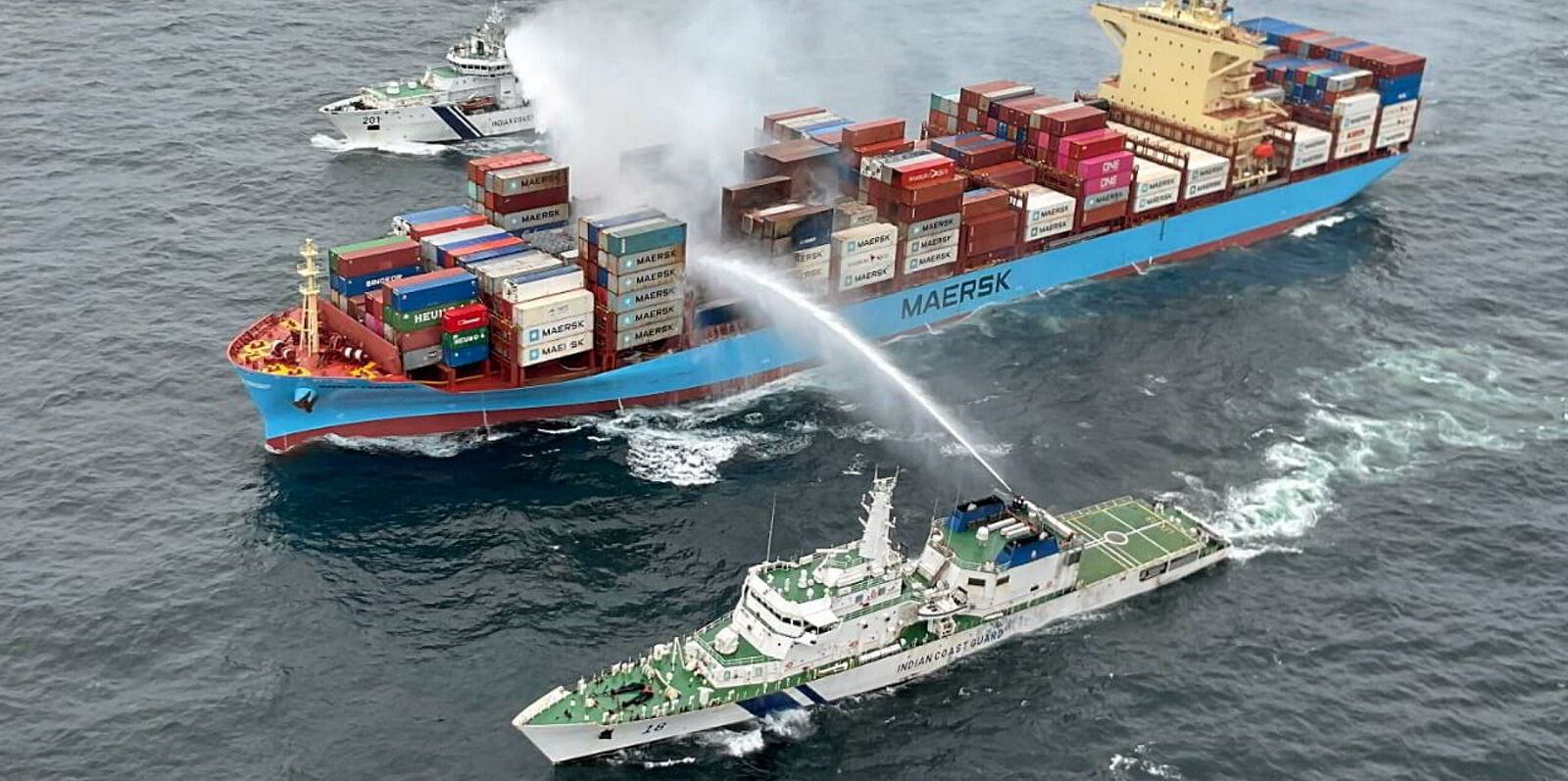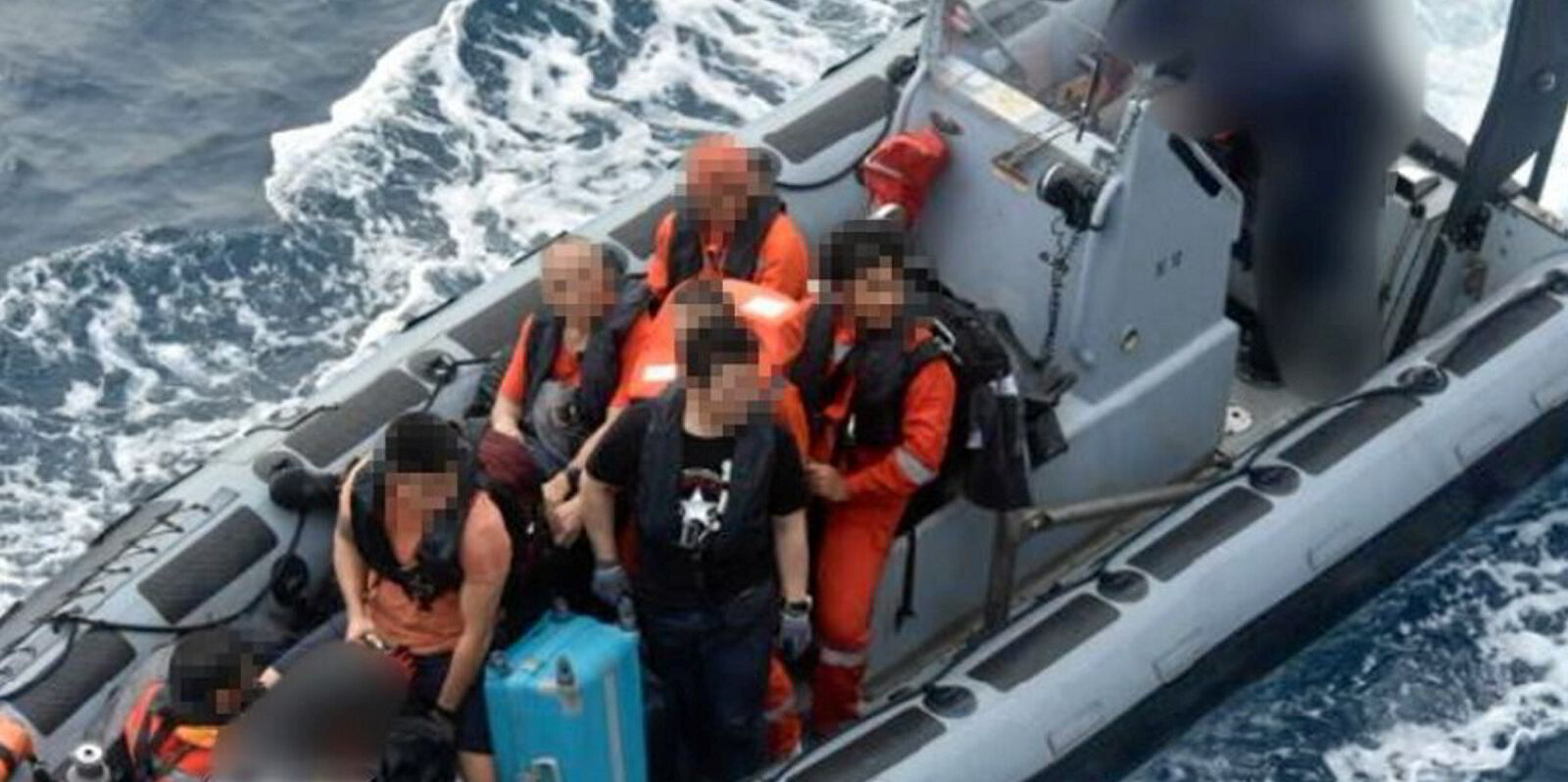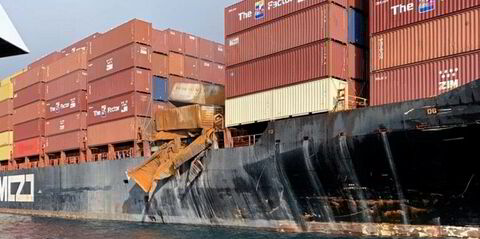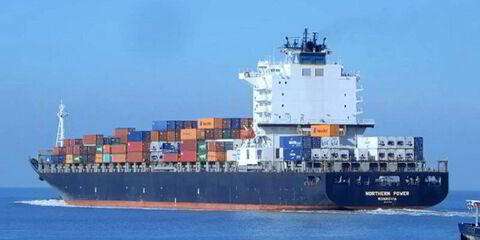Failures of training, cargo handling and regulation have turned container ships into “vulnerable giants” with major shortcomings to fight onboard fires, according to a senior executive at Munich Re.
Developments in fire safety have failed to keep pace with the increasing size of boxships over past decades, with sprinklers and hoses on many not able to reach every place on the ship, Munich Re global head of marine reinsurance Markus Spielmann said.
A surge in major fire claims for boxships and car carriers in recent years has highlighted structural problems that need to be addressed but it is “difficult to detect the urgency” among regulators and the wider industry, Spielmann told TradeWinds.
“Container vessels have increased in size significantly since the 1970s but the regulations haven’t kept up,” he said.
“We’re trying to raise awareness that things need to improve. We need better training of personnel on board — they need to be trained more often and to a higher quality standard. It’s simple and cheap and relatively easy to do.”
Fires account for about one-fifth of the value of all claims in marine insurance and data suggests that larger claims are becoming more common.
A container cargo fire was reported every nine days in 2023, according to Norwegian insurer Gard.
Burning issue
The Nordic Association of Marine Insurers highlighted the dangers of fires on ever larger vessels this year, when it recorded eight hull insurance losses of more than $10m last year, with half attributable to fire.
Major fires this year included one on the 5,920-teu Maersk Frankfurt (built 2024) in July while it was off the coast of India. The fire broke out among the containers and left one crew member dead.

Car carrier fires on board included the 6,200-ceu Fremantle Highway (built 2013) in the North Sea in July 2023, which led to the evacuation of the crew, the death of one seafarer, and a potential hull insurance claim of about $70m to $80m.
In February 2022, the Mitsui OSK Lines-operated 6,400-ceu Felicity Ace (built 2005) caught fire while carrying about 4,000 vehicles, including luxury brands and electric cars. All 22 crew members were safely evacuated, but the ship sank after burning for two weeks. The cause of the fire was never found.
Threats have increased partly due to the increased trade in lithium-ion batteries needed for electric cars and the broader decarbonisation agenda.
The risks from the increased transport of combustible goods by containers are amplified by mis-declared hazardous cargoes that end up stowed in the wrong areas of the ship where fires are difficult to fight.
Spielmann said that Munich Re had teamed up with the US Coast Guard and the National Cargo Bureau to develop software to identify mis-declared cargo and improve targeted inspections of potentially dangerous containers.
The issue will be discussed at this month’s International Union of Marine Insurers conference in Berlin, Germany, where early detection is seen as key to combating the issues.
Munich Re has also invested in ShipIn, a technology company that uses onboard cameras allied with artificial intelligence to give early warnings of fires.
Spotting danger
ShipIn co-founder and chief executive Osher Perry said the system can capture early signs of fire and malfunctions but also alerts controllers to potential problems in maintenance work, cargo operations and bridge activities to limit fire risks.
Each ship has at least eight cameras, with the largest container ships having about 40, and the company has installed the AI-powered systems on hundreds of ships. “It is identifying risks before they end up in massive concerns,” Perry said.
Read more
- Pipeline fire could hit tanker loadings at key Libyan terminal
- Video: Huge explosion hits Yang Ming container ship in Chinese port
- Tanker explosion leaves five seafarers dead and 15 injured in blaze
- Investigators board fire-damaged Hafnia tanker in collision probe
- Fire-ravaged hull of shadow fleet VLCC revealed after collision with Hafnia tanker





